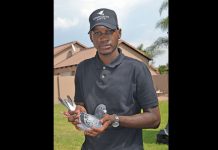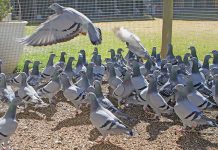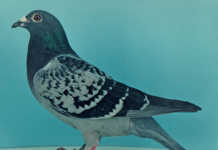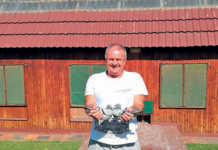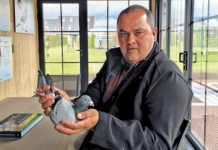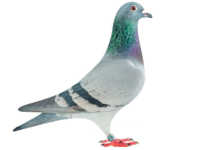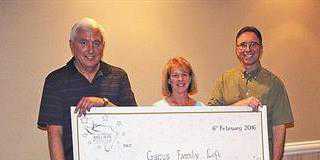The 11th Sun City Million Dollar Pigeon Race had contestants on the edges of their seats on 3 February. The winners are in high spirits, and the fanciers who didn’t score are back at the drawing board. The common consensus worldwide is that the winning birds are those which possess the “correct” gene package for the circumstances of the race – and then hit peak form on the day.
The ‘correct’ genetic package There are as many opinions in the pigeon fraternity as there are pigeon fanciers. There are individuals of elevated intelligence who accept as true that mankind descended from the ape. Be thus forewarned before entering into a debate about your ancestry! There has not been an adequate amount of research into the science of pigeon racing. Geneticists jokingly say of their subject: “The more and more we learn, the less and less we know.” Criteria for the ideal racing pigeon Superior orientation: There are so many hills and turn-offs on the road to Pilanesberg at Sun City that I often make the wrong turn, even after travelling to it once a year for the past nine years. A racing pigeon that “travels” towards it at different times in sunny or overcast weather, unexpected rain and strong winds driving it off-course from different angles should be excused if it ends up in another town. should also be pardoned even when it finds an additional settlement because it missed the town. know of three quality racing pigeons that had an off day in terms of homing faculty last year. A Pretoria bird strayed and ended up in Bedfordview, an Alberton bird ended up in Vanderbijlpark, and a Nelspruit bird ended up on a farm in Heidelberg. All three birds were champion racers and worth a substantial amount in cash, yet on a certain day they did not feel too good and did not know the way home. Thanks to honest fanciers, pigeons were reported to the owners and returned. The criterion of the ideal Sun City Million Dollar racing pigeon is that it should have a pedigree history of multiple winners that were able to score in race events from 600km to 1 000 km in difficult weather conditions similar to the route in the African bush. That is – mountainous area, overcast weather, rain, strong headwinds, hot, humid conditions and so on. Superior internal and external features: A renowned European fancier, the late Van der Schelden, advocated that the ideal pigeon should have a wingspan of a certain length if it is to be of any value.
H owever, it was afterwards determined that he forgot two things: (1) The length of the wing should be measured in proportion to the length, size and shape of the body, and tail length and so on; (2) Most essentially one has to ask, “Who shovels?” We need an elevated strength of the heart muscle and all other muscles, an effective immunity, a functional hormonal and digestive system – all housed in a well-designed and balanced body frame with wings to match. The ideal working racing pigeon should own all the internal and external qualities of excellence in abundance. The will to win: The will to win should be recognised in the “fighting” factor and the territorial inclination of a bird. It can be bred into a family by skilful process of elimination. In the “widowhood” system pigeons are motivated by jealousy and rewarded to see or get their mate on return from a race. Those that react best to this system are the most territorial birds, and should most definitely own the “will to win” as a genetic factor. A once-off winner is not regarded as the ideal pigeon, but the pigeon with the highest and repeated rankings on the scoreboard in strong competition is the one to select. In a one-day loft race like the Sun City Million Dollar, the birds from 30 countries are trained under the same conditions, feed and so on. None is singled out to benefit from preferential treatment. Their permanent ID rings are encapsulated and they are thus trained anonymously. They cannot be motivated individually – therefore the pigeons that own the “will to win” and are naturally territorial will adapt to their surroundings and settle best in the loft. They will respond to the training programme on their own merits of inbred (genetic) quality. owever, to avoid any misconception there are pigeons that respond within the “will to win” criterion without being coached on the widowhood system, but in my book they are often less territorial. L et’s call to memory the birds that arrived together in the first pack in the pre-final road-training flights at Sun City. In counting the number of birds that entered the loft first, it was obvious that most were entered from countries that use the widowhood system. A South African pigeon of superior quality that showed the above feature was the bird Ane, owned by Tommy van Zyl. South African fanciers can benefit by selecting for this criterion. The all-rounder and early maturity: The ideal Million Dollar candidate should mature from a young age and be an all-rounder in terms of its ability to fly at high speed, but not lose pace in strong headwinds and hot and humid conditions. It should own the “guts” factor to endure heat and keep superior condition under trying circumstances. It should not altogether sprint, but neither should it plod, such as the stayers that can carry on for many hours but do not possess enough speed. These are the winners, and they emerge from the first pack that “jets” away at the liberation point. – Thomas Smit Contact Thomas Smit on (011) 680 4778, e-mail [email protected]. |fw

